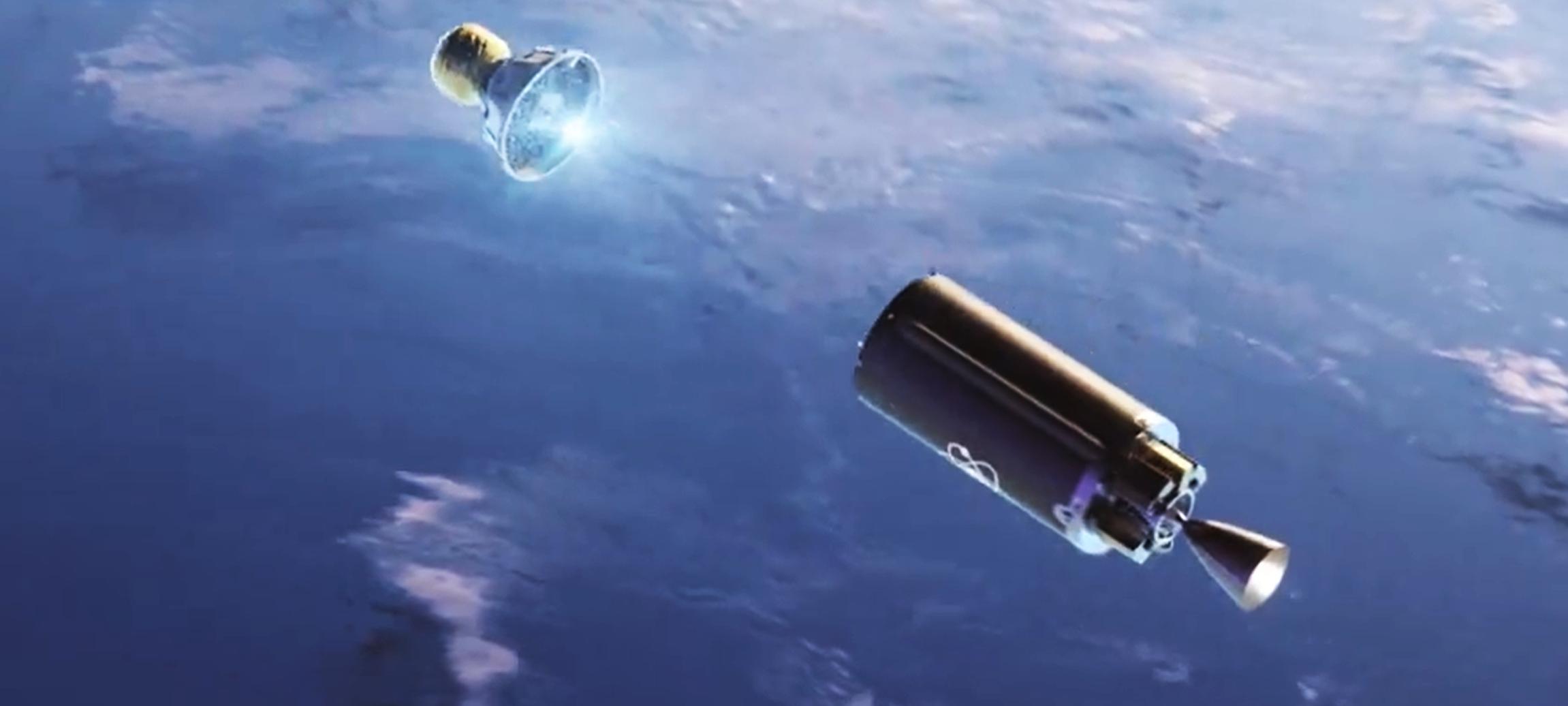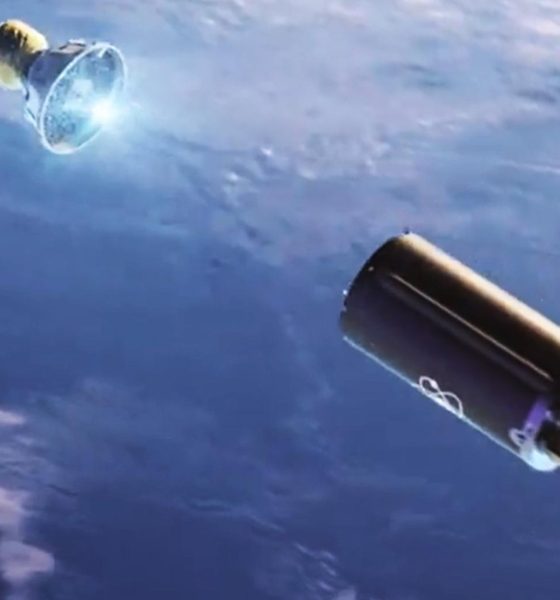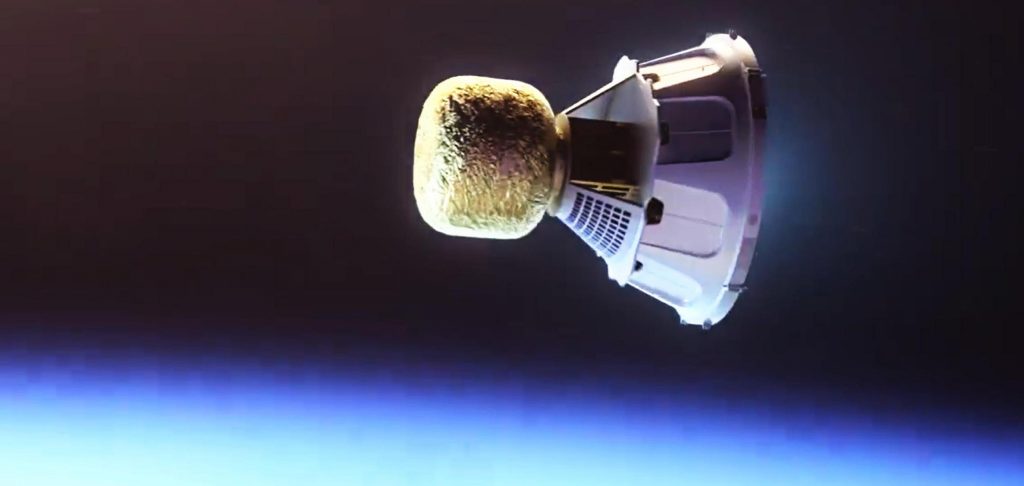

News
Rocket Lab’s NASA Moon launch to kick off new era of ultra-cheap deep space exploration
Rocket Lab will soon take its tiny Electron rocket further than any similarly-sized vehicle before it, sending a NASA satellite to the Moon and potentially kicking off a new era of unprecedentedly cheap space exploration.
On February 14th, the world-leading small satellite launch company announced – alongside NASA – that the space agency had awarded it a $9.95 million launch contract worth $9.95 million to send the $13.7 million Cislunar Autonomous Positioning System Technology Operations and Navigation Experiment (CAPSTONE) CubeSat to lunar orbit. In other words, NASA has contracted a full-up scientific mission to the Moon for less than $25M total – almost unfathomably cheap compared to all interplanetary exploration performed in the last half-century.
In the same way we opened access to LEO for smallsats, we're excited to become the dedicated ride to the Moon & beyond for smallsats.— Rocket Lab (@RocketLab) February 14, 2020
The mission announcement comes just four months after Rocket Lab announced at the International Astronautical Congress in Washington D.C., that it would utilize its small two-stage rocket, Electron, and proprietary satellite bus platform, Photon, to support lunar orbit missions. It also occurs just two months after the official opening of Rocket Lab’s Launch Complex 2 located in Wallops, Virginia – a dedicated facility to specifically service NASA and the US government launch contracts.
According to Ana Rivera, LSP program integration manager for CAPSTONE, the launch will be Rocket Lab’s “inaugural NASA launch from their new launch site at the Mid-Atlantic Regional Spaceport in Virginia” and is expected to occur in the early part of 2021.

NASA’s CAPSTONE is a tiny spacecraft weighing around 55 lb (25 kg) – small enough for an equally tiny rocket to send it on an improbable journey. Rocket Lab’s two-stage Electron rocket will begin by launching CAPSTONE to LEO, where NASA says Photon – a Rocket Lab-built kick stage and satellite bus – will send CAPSTONE on its way to the Moon. CAPSTONE will then use its own propulsion system to enter a “Near Rectilinear Halo Orbit” (NRHO) around the Moon.
It is important to note that, under its own propulsion, CAPSTONE is expected to take nearly three months to reach its intended orbit around the moon. However, the CAPSTONE mission is an imperative one that could lead to better understandings about the journey to the moon and “can reduce navigation uncertainties ahead of our future missions using the same lunar orbit” according to Marshall Smith, director of human lunar exploration programs at NASA Headquarters.
Rocket Lab founder and CEO Peter Beck stated that Rocket Lab is “able to provide NASA with complete control over every aspect of launch and mission design for CAPSTONE, something typically only available to much larger spacecraft on larger launch vehicles. In the same way (Rocket Lab) opened access to low Earth orbit for small satellites, we’re proud to be bringing the Moon within reach to enable research and exploration.”
Photon – the all-in-one experience
Photon is a satellite bus platform designed with interplanetary delivery and deep space communication in mind. The small, but mighty, launch-to-orbit bus features downlink communication capability, radiation-tolerant avionics, and higher power generation. Photon is also able to precisely deploy multiple small payloads into various orbits enabling multiple mission launches supported by Rocket Lab’s proprietary Curie propulsion system.
In the era of NASA’s Artemis initiative to return astronauts to the moon, Beck explains that “small satellites will play a crucial role in science and exploration, as well as providing communications and navigation infrastructure to support returning humans to the Moon.” In this sense, small satellites will serve as pathfinders and build the necessary infrastructure prior to the arrival of more robust hardware such as NASA’s lunar spaceship Gateway and eventually human space travelers.

To date, Rocket Lab has successfully launched 11 missions and 48 satellites to low-Earth orbit. Eventually, Rocket Lab intends to use a recoverable and reusable Electron to loft Photon on interplanetary missions to lunar fly-by orbits, Near Rectilinear Halo Orbit (NRHO), and low-Lunar Orbit by the end of 2020. The two most recent missions – Running Out Of Fingers and Birds of a Feather – featured an upgraded first-stage of Electron that survived re-entry in one piece. This will hopefully lead to a fully recoverable first-stage rivaling the current recovery efforts of SpaceX with its first stage of the Falcon 9 boosters.
Check out Teslarati’s Marketplace! We offer Tesla accessories, including for the Tesla Cybertruck and Tesla Model 3.

News
Tesla FSD v14.2.2 is getting rave reviews from drivers
So far, early testers have reported buttery-smooth drives with confident performance, even at night or on twisty roads.

Tesla Full Self-Driving (Supervised) v14.2.2 is receiving positive reviews from owners, with several drivers praising the build’s lack of hesitation during lane changes and its smoother decision-making, among others.
The update, which started rolling out on Monday, also adds features like dynamic arrival pin adjustment. So far, early testers have reported buttery-smooth drives with confident performance, even at night or on twisty roads.
Owners highlight major improvements
Longtime Tesla owner and FSD user @BLKMDL3 shared a detailed 10-hour impression of FSD v14.2.2, noting that the system exhibited “zero lane change hesitation” and “extremely refined” lane choices. He praised Mad Max mode’s performance, stellar parking in locations including ticket dispensers, and impressive canyon runs even in dark conditions.
Fellow FSD user Dan Burkland reported an hour of FSD v14.2.2’s nighttime driving with “zero hesitations” and “buttery smooth” confidence reminiscent of Robotaxi rides in areas such as Austin, Texas. Veteran FSD user Whole Mars Catalog also demonstrated voice navigation via Grok, while Tesla owner Devin Olsen completed a nearly two-hour drive with FSD v14.2.2 in heavy traffic and rain with strong performance.
Closer to unsupervised
FSD has been receiving rave reviews, even from Tesla’s competitors. Xpeng CEO He Xiaopeng, for one, offered fresh praise for FSD v14.2 after visiting Silicon Valley. Following extended test drives of Tesla vehicles running the latest FSD software, He stated that the system has made major strides, reinforcing his view that Tesla’s approach to autonomy is indeed the proper path towards autonomy.
According to He, Tesla’s FSD has evolved from a smooth Level 2 advanced driver assistance system into what he described as a “near-Level 4” experience in terms of capabilities. While acknowledging that areas of improvement are still present, the Xpeng CEO stated that FSD’s current iteration significantly surpasses last year’s capabilities. He also reiterated his belief that Tesla’s strategy of using the same autonomous software and hardware architecture across private vehicles and robotaxis is the right long-term approach, as it would allow users to bypass intermediate autonomy stages and move closer to Level 4 functionality.
News
Elon Musk’s Grok AI to be used in U.S. War Department’s bespoke AI platform
The partnership aims to provide advanced capabilities to 3 million military and civilian personnel.

The U.S. Department of War announced Monday an agreement with Elon Musk’s xAI to embed the company’s frontier artificial intelligence systems, powered by the Grok family of models, into the department’s bespoke AI platform GenAI.mil.
The partnership aims to provide advanced capabilities to 3 million military and civilian personnel, with initial deployment targeted for early 2026 at Impact Level 5 (IL5) for secure handling of Controlled Unclassified Information.
xAI Integration
As noted by the War Department’s press release, GenAI.mil, its bespoke AI platform, will gain xAI for the Government’s suite of tools, which enable real-time global insights from the X platform for “decisive information advantage.” The rollout builds on xAI’s July launch of products for U.S. government customers, including federal, state, local, and national security use cases.
“Targeted for initial deployment in early 2026, this integration will allow all military and civilian personnel to use xAI’s capabilities at Impact Level 5 (IL5), enabling the secure handling of Controlled Unclassified Information (CUI) in daily workflows. Users will also gain access to real‑time global insights from the X platform, providing War Department personnel with a decisive information advantage,” the Department of War wrote in a press release.
Strategic advantages
The deal marks another step in the Department of War’s efforts to use cutting-edge AI in its operations. xAI, for its part, highlighted that its tools can support administrative tasks at the federal, state and local levels, as well as “critical mission use cases” at the front line of military operations.
“The War Department will continue scaling an AI ecosystem built for speed, security, and decision superiority. Newly IL5-certified capabilities will empower every aspect of the Department’s workforce, turning AI into a daily operational asset. This announcement marks another milestone in America’s AI revolution, and the War Department is driving that momentum forward,” the War Department noted.
News
Tesla FSD (Supervised) v14.2.2 starts rolling out
The update focuses on smoother real-world performance, better obstacle awareness, and precise end-of-trip routing, among other improvements.

Tesla has started rolling out Full Self-Driving (Supervised) v14.2.2, bringing further refinements to its most advanced driver-assist system. The new FSD update focuses on smoother real-world performance, better obstacle awareness, and precise end-of-trip routing, among other improvements.
Key FSD v14.2.2 improvements
As noted by Not a Tesla App, FSD v14.2.2 upgrades the vision encoder neural network with higher resolution features, enhancing detection of emergency vehicles, road obstacles, and human gestures. New Arrival Options let users select preferred drop-off styles, such as Parking Lot, Street, Driveway, Parking Garage, or Curbside, with the navigation pin automatically adjusting to the user’s ideal spot for precision.
Other additions include pulling over for emergency vehicles, real-time vision-based detours for blocked roads, improved gate and debris handling, and extreme Speed Profiles for customized driving styles. Reliability gains cover fault recovery, residue alerts on the windshield, and automatic narrow-field camera washing for new 2026 Model Y units.
FSD v14.2.2 also boosts unprotected turns, lane changes, cut-ins, and school bus scenarios, among other things. Tesla also noted that users’ FSD statistics will be saved under Controls > Autopilot, which should help drivers easily view how much they are using FSD in their daily drives.
Key FSD v14.2.2 release notes
Full Self-Driving (Supervised) v14.2.2 includes:
- Upgraded the neural network vision encoder, leveraging higher resolution features to further improve scenarios like handling emergency vehicles, obstacles on the road, and human gestures.
- Added Arrival Options for you to select where FSD should park: in a Parking Lot, on the Street, in a Driveway, in a Parking Garage, or at the Curbside.
- Added handling to pull over or yield for emergency vehicles (e.g. police cars, fire trucks, ambulances).
- Added navigation and routing into the vision-based neural network for real-time handling of blocked roads and detours.
- Added additional Speed Profile to further customize driving style preference.
- Improved handling for static and dynamic gates.
- Improved offsetting for road debris (e.g. tires, tree branches, boxes).
- Improve handling of several scenarios, including unprotected turns, lane changes, vehicle cut-ins, and school buses.
- Improved FSD’s ability to manage system faults and recover smoothly from degraded operation for enhanced reliability.
- Added alerting for residue build-up on interior windshield that may impact front camera visibility. If affected, visit Service for cleaning!
- Added automatic narrow field washing to provide rapid and efficient front camera self-cleaning, and optimize aerodynamics wash at higher vehicle speed.
- Camera visibility can lead to increased attention monitoring sensitivity.
Upcoming Improvements:
- Overall smoothness and sentience.
- Parking spot selection and parking quality.








